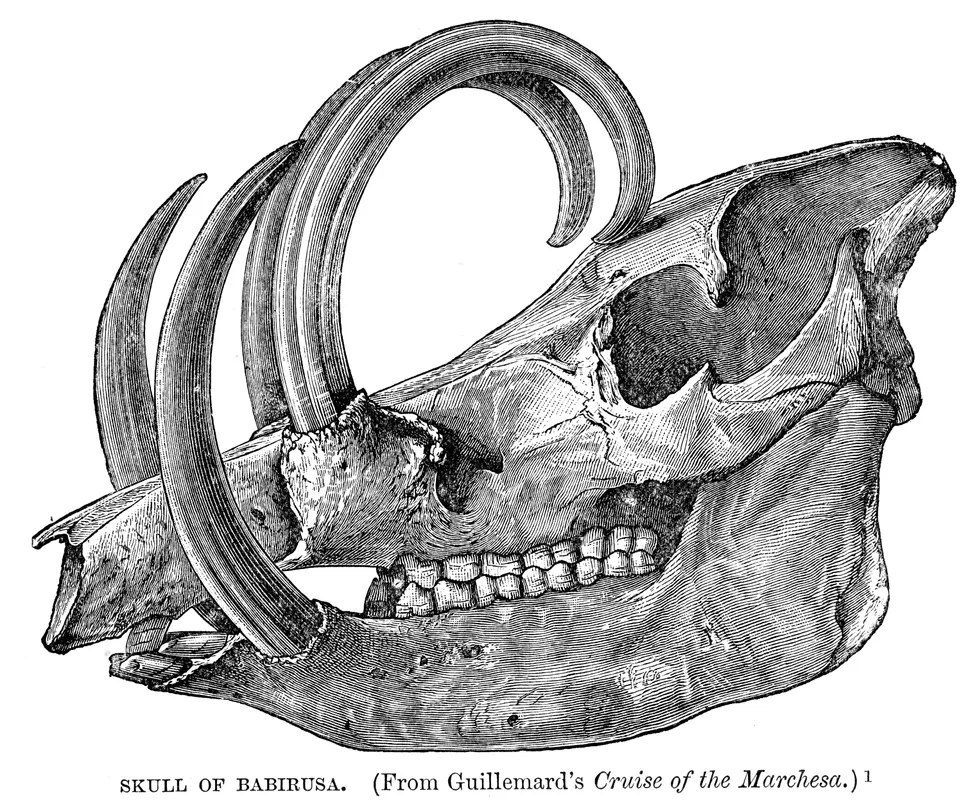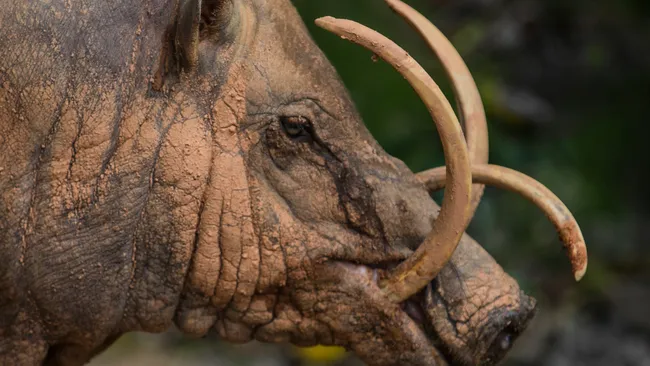Babirusas are believed to have diverged from their pig ancestors between 26 million and 12 million years ago after getting isolated on Sulawesi when sea levels rose at the end of the last ice age.
The babirusa (Babyrousa) is a truly unique member of the pig family found only on the Indonesian islands of Sulawesi, Buru, and the Togian and Sula archipelagos. Often called “pig deer” due to their antler-like tusks, babirusas stand out with their extraordinary appearance, diet, and behaviors.

Why Babirusas Are Fascinating
- Unusual Tusks: Male babirusas have upward-curving tusks that grow out of their upper canines, curving backward over the top of their snouts. These tusks grow continuously throughout their lives and can sometimes even curve back into their skulls if they’re not worn down. Interestingly, babirusas don’t use these tusks for fighting, as their tusks are fragile. Instead, they box each other on their hind legs when competing for mates, and it’s believed that the tusks may serve as a way to attract females.
- Ancient Lineage: Babirusas are among the oldest members of the pig family, diverging from other pigs between 26 million and 12 million years ago, likely due to geographical isolation. Cave drawings of babirusas from nearly 40,000 years ago highlight their ancient relationship with humans.
- Specialized Diet: Unlike other pigs, babirusas don’t root in hard ground because they lack the strong rostral bone common in other pig snouts. Instead, they eat a varied diet of leaves, fruit, mushrooms, tree bark, insects, fish, and small mammals, foraging with their hooves and sometimes standing on their hind legs to reach higher vegetation.
- Distinctive Species: There are three known species of babirusa:
- North Sulawesi Babirusa (Babyrousa celebensis): Grayish-brown, native to Sulawesi.
- Buru Babirusa (Babyrousa babyrussa): Thick golden hair, native to Buru and parts of the Sula Islands.
- Togian Babirusa (Babyrousa togeanensis): Hairless, found only on the Togian islands.
- Unique Digestion: Babirusas have a complex, two-chambered stomach similar to that of ruminants like sheep, allowing them to digest a varied diet more efficiently than other pigs.
Babirusas, with their prehistoric charm and unusual tusks, stand out as one of nature’s most extraordinary pigs, thriving in a habitat found nowhere else in the world.
